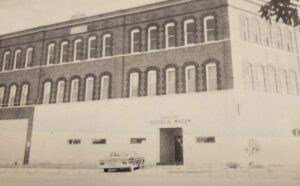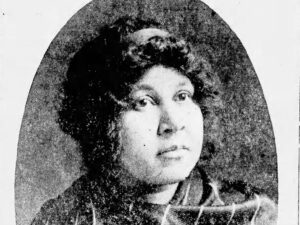Rachel Whitney, Curator,
Sapulpa Historical Museum
The town of Sapulpa had not built a school building by 1894. However, the kids had to have schooling somewhere. Sapulpa’s first “school” was in the offices of the W.A. Smith Livery Barn offices.
This first school was considered a subscription school. At this time, there had not been a government entity for the settlers to raise taxes, so the parents of the children would pay a monthly fee, hence a “subscription.” The cost would be five cents a day or a dollar a month ($1.84 a day, or $26.82 a month today). Each child would bring the money with them to each school day.
The first school began with about twelve to fourteen children. The school would often be “interrupted by a stranger’s coming to rent a rig.” As teacher, Cassie Medders, who “was employed more for her own good than that of the children, for she, herself, had completed only the fourth reader. But she was a nice girl and did her best to teach the pupils,” Mrs. Betty (Menifee) Darner recalled her time as a student there years later. Miss Medders remained until Christmas 1894, and her place was taken by Sina Bussett.
The school operated in Smith’s office for a short time only, for another school would be introduced. Miss Bussett built a two-room house on the corner of Hobson and Park Street. The room on the top floor was her living quarters and the bottom floor room was set for the school. “She had built materials of packing boxes obtained from merchants. Although the house was a bit unusual as to appearances and lacked furniture, she was an earnest teacher and worked diligently to train the pupils.”
Although the school had been moved, the subscription cost stayed the same, but with an added fee. “Each pupil, in addition to the fee of one dollar a month, had to provide their own desk, chair, and books. The school was less frequently interrupted than formerly and enjoyed a more wholesome environment than the one in the livery barn.”
This only lasted another year, for in 1895, “the school was given a grant by the government and a school house was built. The money for the building was collected by popular subscription. When the building, a one-room affair, was completed, Colonel Dodd, a Civil War veteran, was selected as the teacher.” This school was built on the lot of the 200 block of East Dewey, southside.
“Sally Boone was elected to teach the school in 1897, but retained only one year, leaving to continue her education. Later, she became one of the most prominent educators in the state of Missouri.”
By 1898, the town’s population grew so much that a “one-room school was too small and for the first time, more than one teacher” was needed. “Mae and Stella Hughes and Viola Wallace opened a school in a business building, teaching the first eight grades.” It is unknown where this building was situated. However, soon another school would be built.
“In Spring 1899, the Dewey College was completed.”
Henry Land and Ira Gregory built a two-and-a-half-story schoolhouse in the 200 block of North Linden. “With G.C. Hughes and Mr. and Mrs. E.B. Hughes as teachers; these teachers remained only one year and in the fall of 1899 the faculty was composed of Pearl Morrow, Bird Lindsey, and Mr. Stricklin.”
“Dewey College at Sapulpa opened with three teachers and 145 students.”
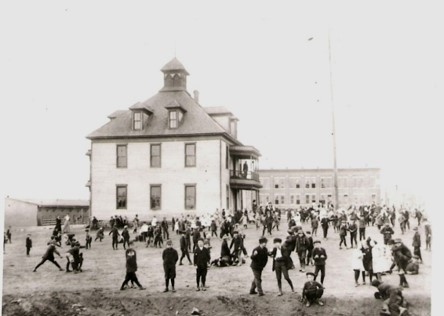
It became an issue with the location for Dewey College. “The location was unsatisfactory and the building was moved to the center of the town. Miss Morrow and Mr. Stricklin were retained and Miss Sarah Flynn and Miss Eleanor Skain were added to the teaching staff.”
The new location for Dewey College rested at the 200 block of East Dewey, southside. Today, it is the location of the Creek County Courthouse. It was also a subscription school. Here, there were at least eighty-four students enrolled.
In 1903, a new school began to be built. With a nickname of ‘The Castle,’ Washington School would open in 1904. “Washington School, the first school built by the city, was quite an edifice at the time with the first two floors devoted to the grade school and the upper floor assigned to the high school.”

Recommended reading from our archives: “The Castle of Sapulpa”
During this time, graduating from a high school from an establishment in the Indian Territory, pupils had to take extra measures unlike graduating high school students from an establishment in a state in the union. “ As high schools in Indian Territory were not accredited, graduates entering college had to pass entrance examinations.”
This week in Sapulpa history, the new school board met. In this meeting “Sapulpa has taken another step toward the front—a step that stamps the town as one of the good solid growth.” With increased enrollment, more classes were designed, and more teachers were hired.
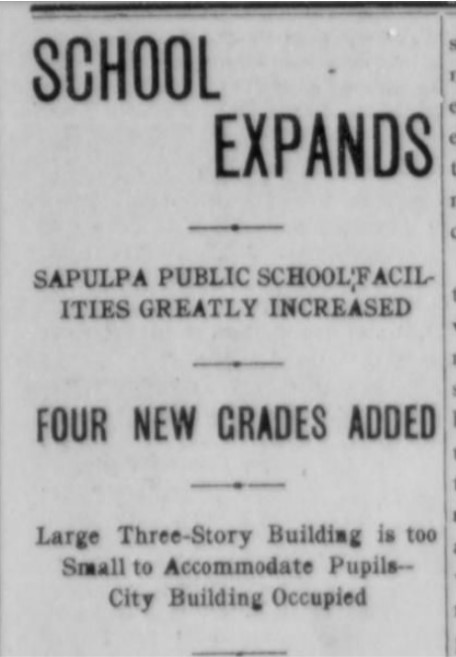
At the meeting, it was discovered that one teacher had 104 students.
It was stated that in the new school, it was decided to divide the most congested grades, first, second, third, and fourth grades. It was announced that two more additional teachers would be hired.
Sapulpa now had two schools and fourteen teachers.
The Castle would suffer a “set-back with the burning of the top floor soon after its construction. The classes were moved into the lower floors and the third floor was never rebuilt.”
“The first graduating class consisted of four members whose graduation exercises were held in the Opera House in 1907. Jennie Myrtle McDougal was the first valedictorian.”
The following years, Sapulpa school system branched out, erecting more and more schools for its students. “Jefferson Grade School was erected in 1908, following extensive oil development. With the exception of Washington School, it is the largest grade school in the system.” Woodlawn began its construction in 1909, around the same time Garfield School was being built.
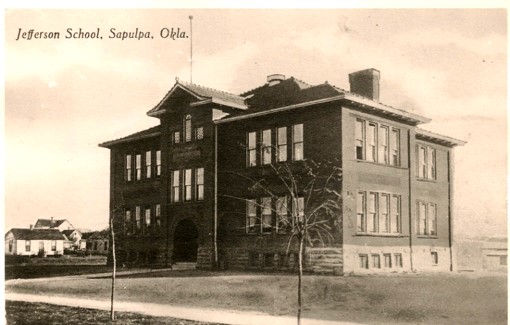
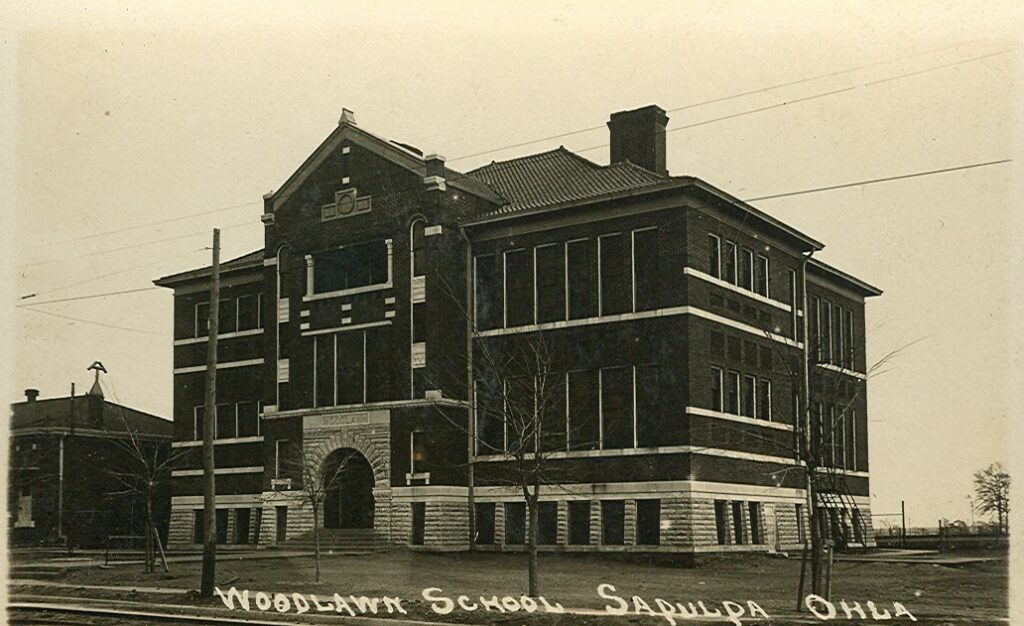
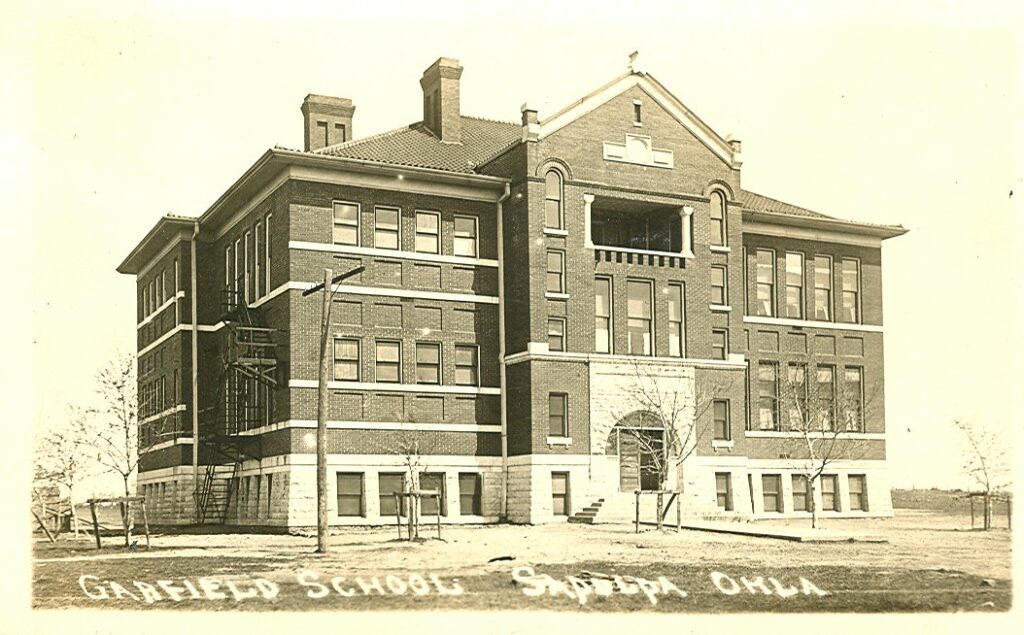
“The growth of the town’s educational system brought greater demand upon high qualifications of teachers. Members of the instructional staff, for a while, were only high school graduates themselves, who soon were required to attend summer sessions at the normal schools. Later, a degree was required for high school teachers, and later the school required degrees for all new teachers employed for the grade schools, and a Masters degree for the new high school teachers. No person can teach in junior college without this degree.”
Finally, in 1917, another school began to be built on Dewey. The Sapulpa High School stood on the corner of Linden and Dewey, and was occupied from 1918 to 1969.
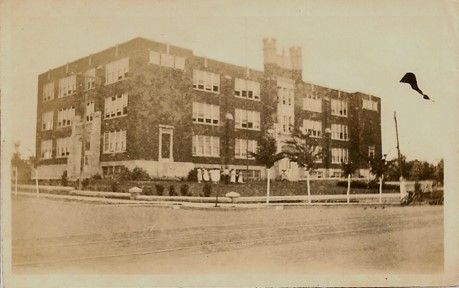
(Sapulpa Light, January 12, 1906; Sapulpa Junior College, 1937; Garfield County Democrat, October 12, 1899)



